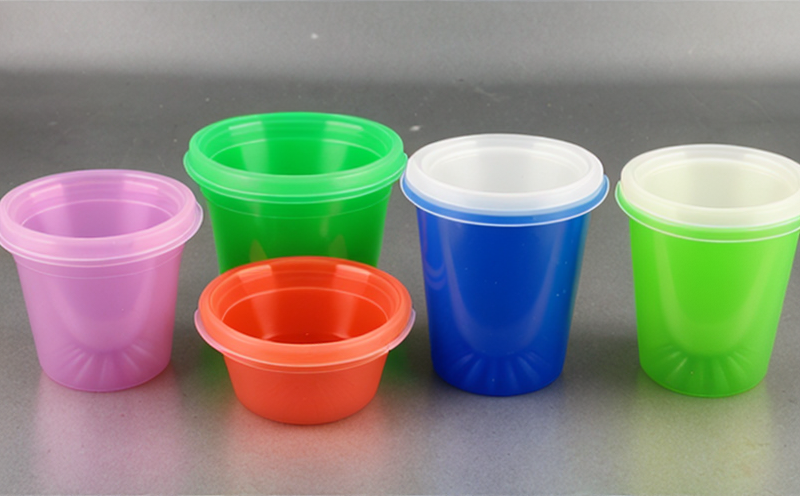ISO 62 Water Absorption Testing of Disposable Plastics
The ISO 62 standard for water absorption testing is a crucial tool in the evaluation and certification of disposable plastics. This test measures how much water a material can absorb, which is essential to ensure that products maintain their integrity under various conditions. Disposables like medical devices, food containers, and personal hygiene items must withstand environmental factors such as moisture without compromising functionality or safety.
The process involves submerging specimens in water at specific temperatures for defined durations. The absorption rate is then calculated based on the weight gain of the specimen before and after exposure to water. This test helps manufacturers identify potential weaknesses, optimize material selection, and meet regulatory standards.
Water absorption testing plays a vital role in ensuring product longevity and safety. For instance, in the medical sector, improper water absorption can lead to degradation or loss of sterility. In food packaging, excessive moisture absorption could compromise hygiene and shelf life. By adhering to ISO 62 standards, manufacturers demonstrate their commitment to quality control and compliance.
The test procedure involves several critical steps:
- Sample preparation: Specimens are cut into uniform pieces of the same size and shape.
- Conditioning: Samples are conditioned in a controlled environment for specified periods to ensure consistent moisture content.
- Sieving: Large particles are removed, ensuring that only fine-grained samples undergo testing.
- Submerging: Specimens are submerged in water at 23°C ± 1°C and held there for the required time (typically 7 days).
The test provides a quantitative measure of water absorption, which is expressed as a percentage. This figure helps engineers and product developers identify how much moisture can penetrate their materials under specific conditions.
Understanding the results of this test is essential for optimizing material choices. For example, if the water absorption rate is too high, it might indicate that the chosen polymer blend lacks sufficient barrier properties. Conversely, a lower than expected rate could suggest that the material has overengineered moisture resistance, leading to unnecessary costs.
| Material | Average Water Absorption (%) | Application |
|---|---|---|
| Polypropylene (PP) | 0.25 - 1.00 | Medical devices, food packaging |
| Polyethylene (PE) | 0.30 - 1.20 | Plastic bags, disposable cups |
| Nylon | 0.50 - 2.00 | Hygiene products, textiles |
This table provides a range of expected water absorption for common plastics used in disposable applications. It serves as a benchmark for manufacturers to compare their materials against industry standards.





